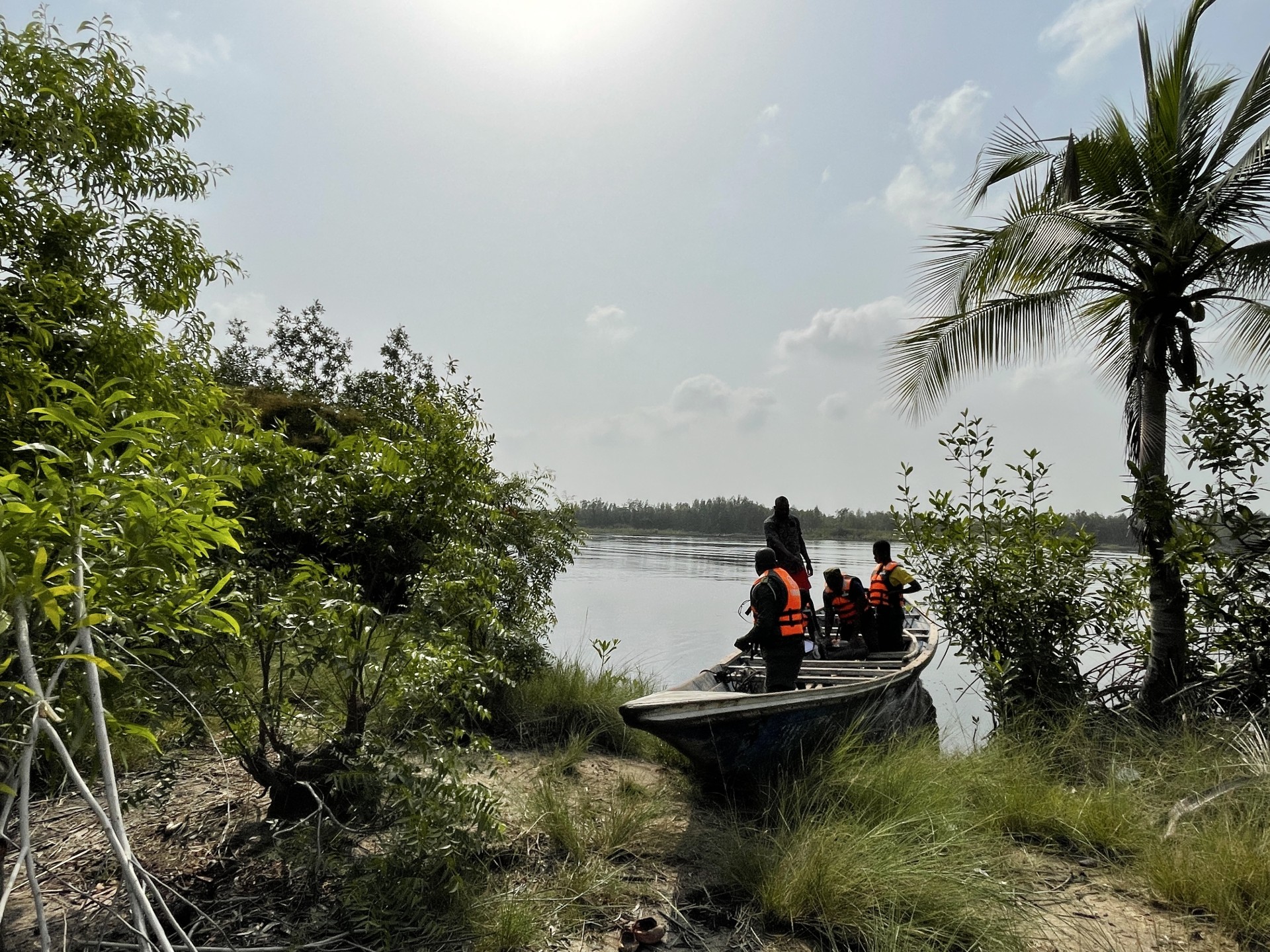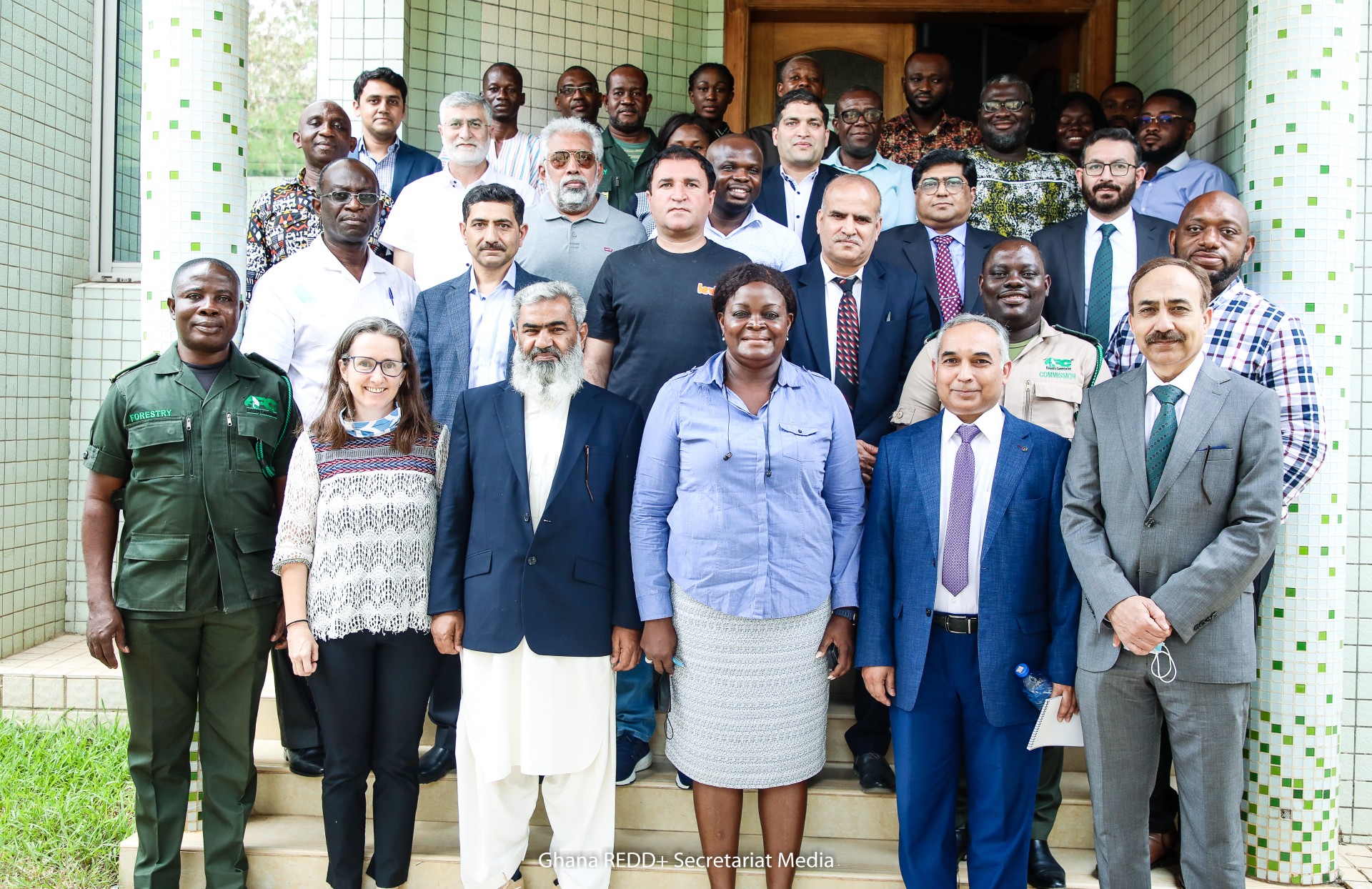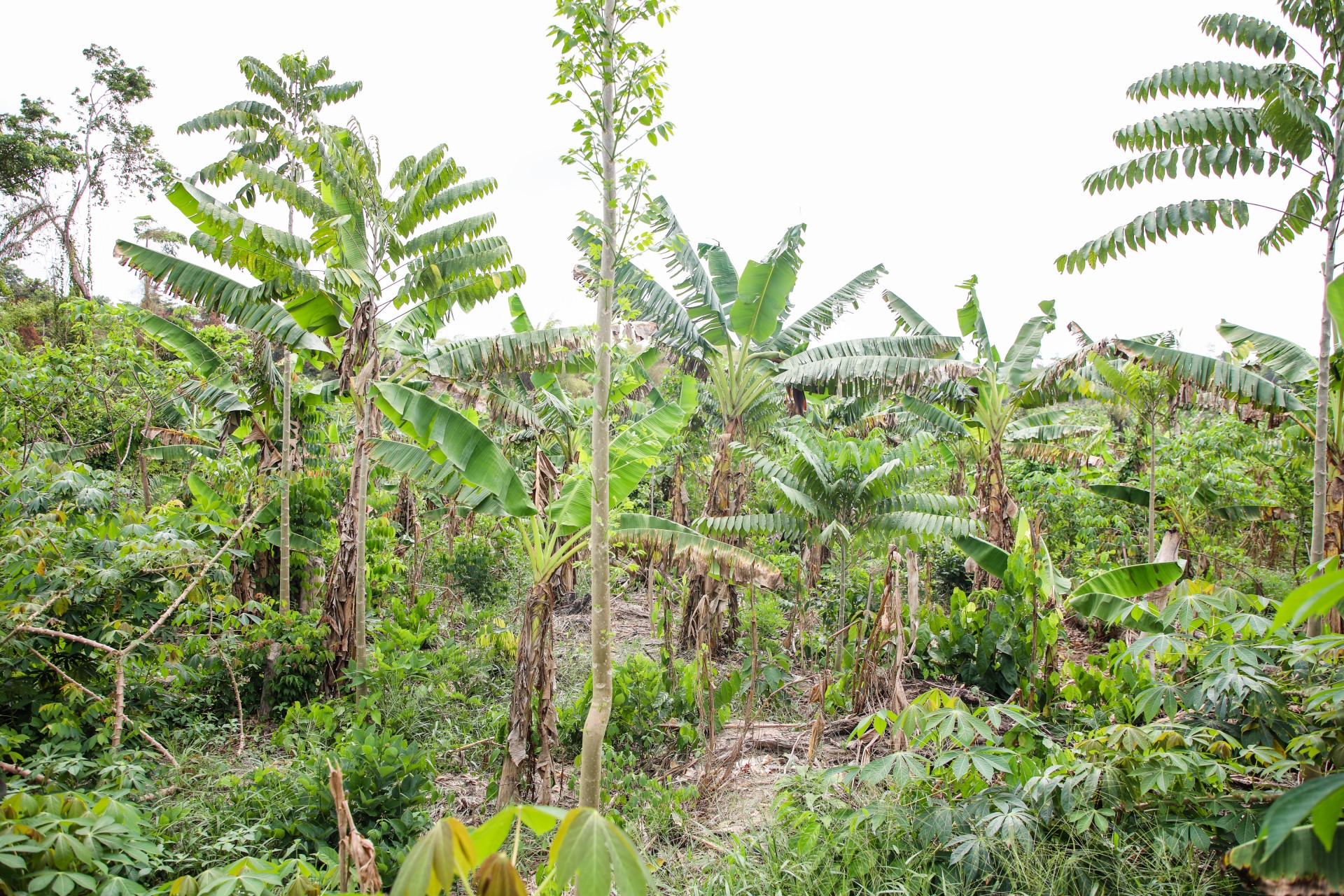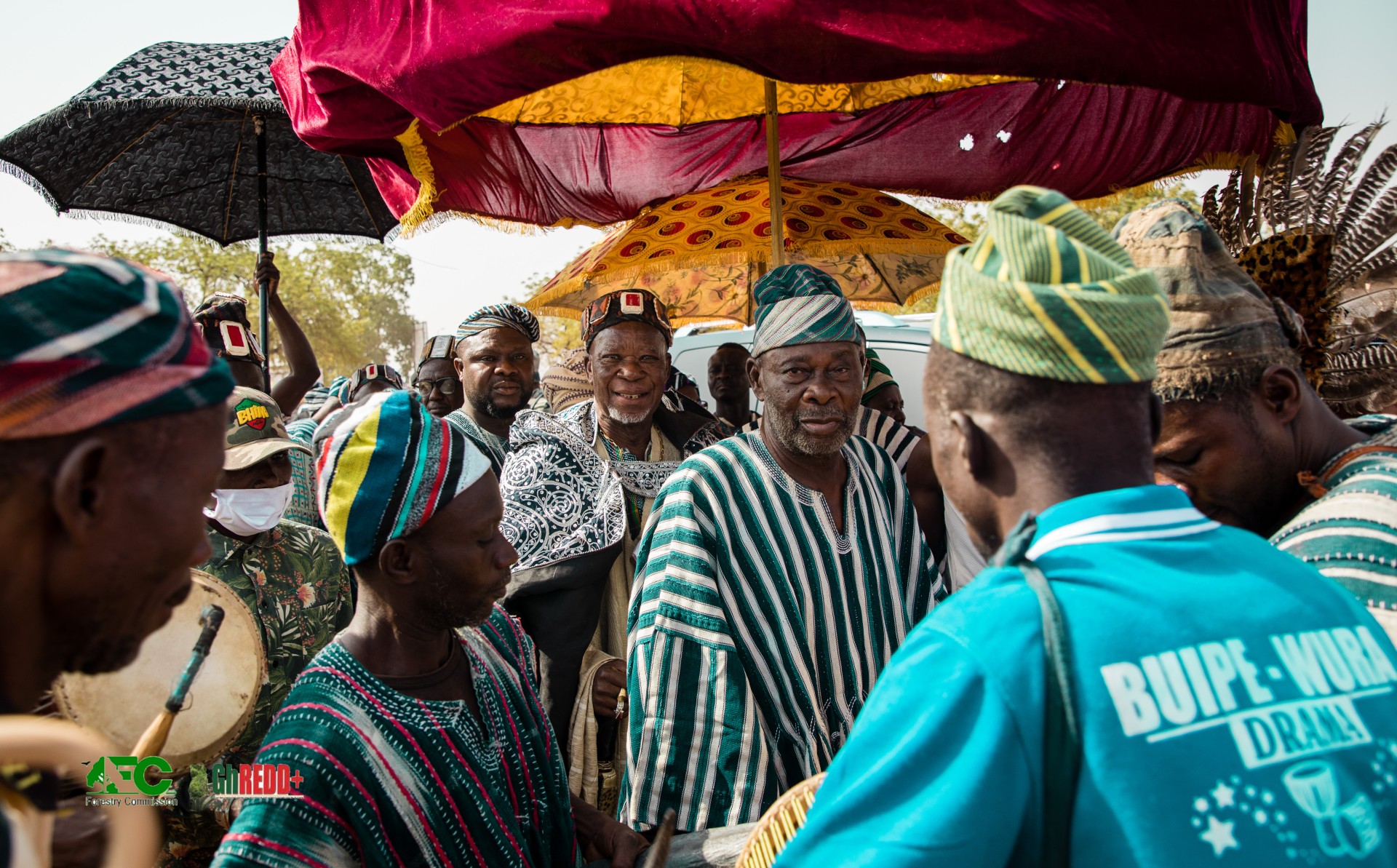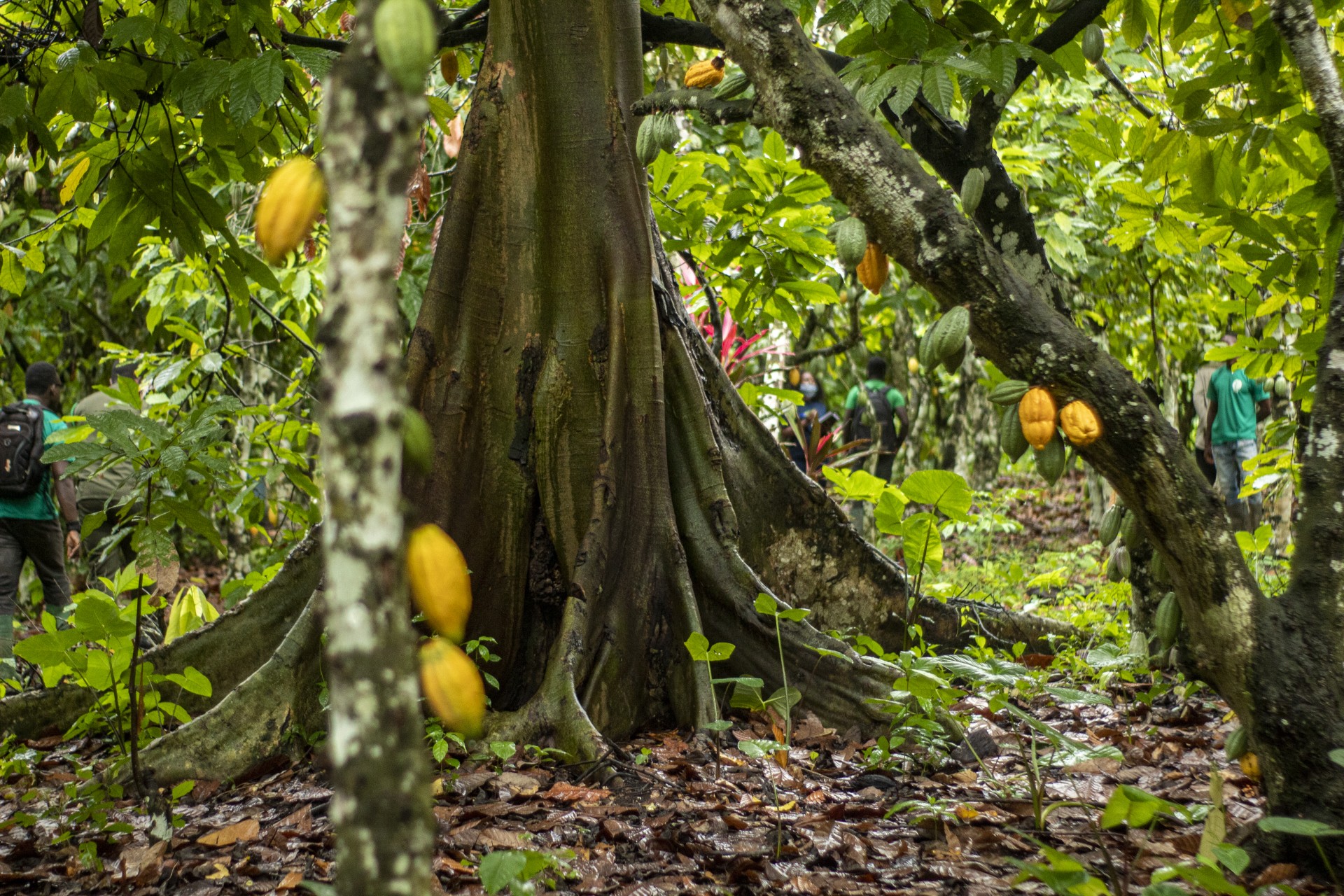
A. The Ghana Cocoa Forest REDD+ Programme (GCFRP)
The Ghana Cocoa Forest REDD+ Programme (GCFRP) is the premiere program to be fully developed under the Ghana REDD+ Strategy.
For much of the time, conversion of forests was not viewed as a problem, but by the mid-nineties it was clear that Ghana’s forest reserves were moderately to severely degraded, low-to-no shade cocoa was expanding at the expense of forests and trees, and biodiversity in the landscape had declined rapidly. Concurrent with the loss of forests, Ghana’s Cocoa Board and the cocoa private sector also recognized that the country was underperforming in terms of national production, despite the growing area under cocoa. Ghana as the second largest producer of cocoa in the World is prepared to tackle these issues and significantly reduce deforestation and degradation in the cocoa-forest landscape through the GCFRP.
GCFRP
The GCFRP therefore represents an innovative, unique, and highly ambitious approach to reduce deforestation and degradation in a sub-national landscape that follows the ecological boundaries of the HFZ and covers approximately 5.9 million ha. The programme seeks to significantly reduce emissions driven by cocoa farming and other agricultural drivers, as well as illegal logging and illegal mining, in a manner that will secure the future of Ghana’s forests. The programme will also significantly improve incomes and livelihood opportunities for farmers and forest users, and establish a results-based planning and implementation framework through which the government, the private sector, civil society, traditional authorities, and local communities can collaborate towards the goal of the programme
The main goal of the programme is to improve land-use and socio-economic development in the High Forest Zone and cocoa growing areas of Ghana by increasing cocoa yield on farm lands through intensification with climate smart practices whilst preventing the expansion of cocoa farms into forest lands and restoring/rehabilitating degraded forest landscapes.
The GCFRP is leading transformational change in the forestry and cocoa sectors to low emissions development and will eventually safeguard Ghana’s forest for future generations.
The programme has 6 main pillars (figure 1) around which interventions and activities are being implemented. They are:
- Forest Reserve Rehabilitation & Restoration
- Institutional Coordination and Monitoring Reporting and Verification System
- Landscape Planning within Hotspot Intervention Areas
- Implementation of Climate Smart Cocoa practices
- Risk Management and Finance
- Legislative & policy Reforms.
For implementation, the GCFRP has selected 6 Hotspot Intervention Areas (HIAs) where initial interventions shall concentrate and be scaled up later. The HIAs were selected based on the prevalence of deforestation and degradation activities and the existing initiatives in the High Forest Zone. The Programme is expected to produce 13.5million tCO2e in emission reductions for the first 6 years.
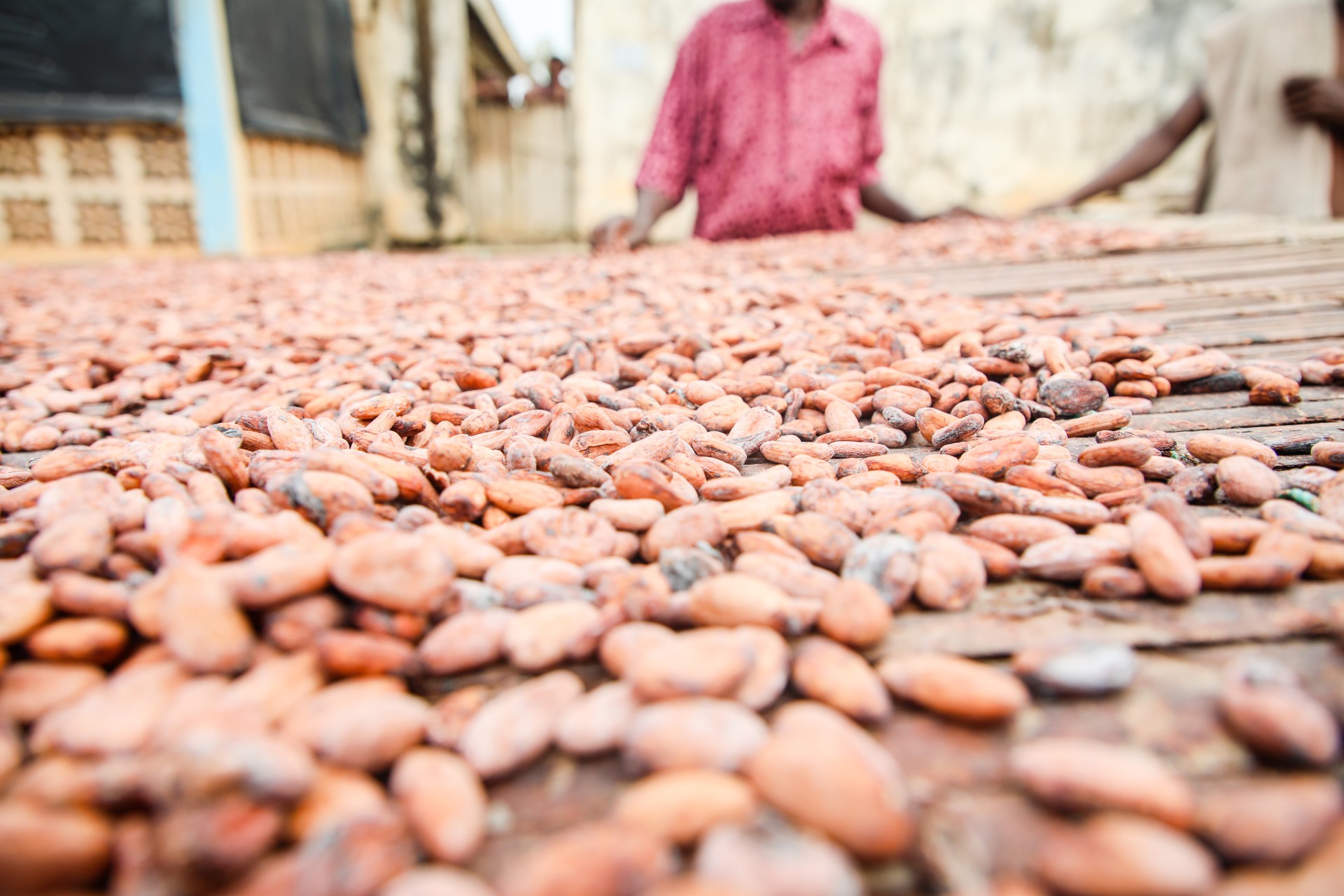
Stop water pollution
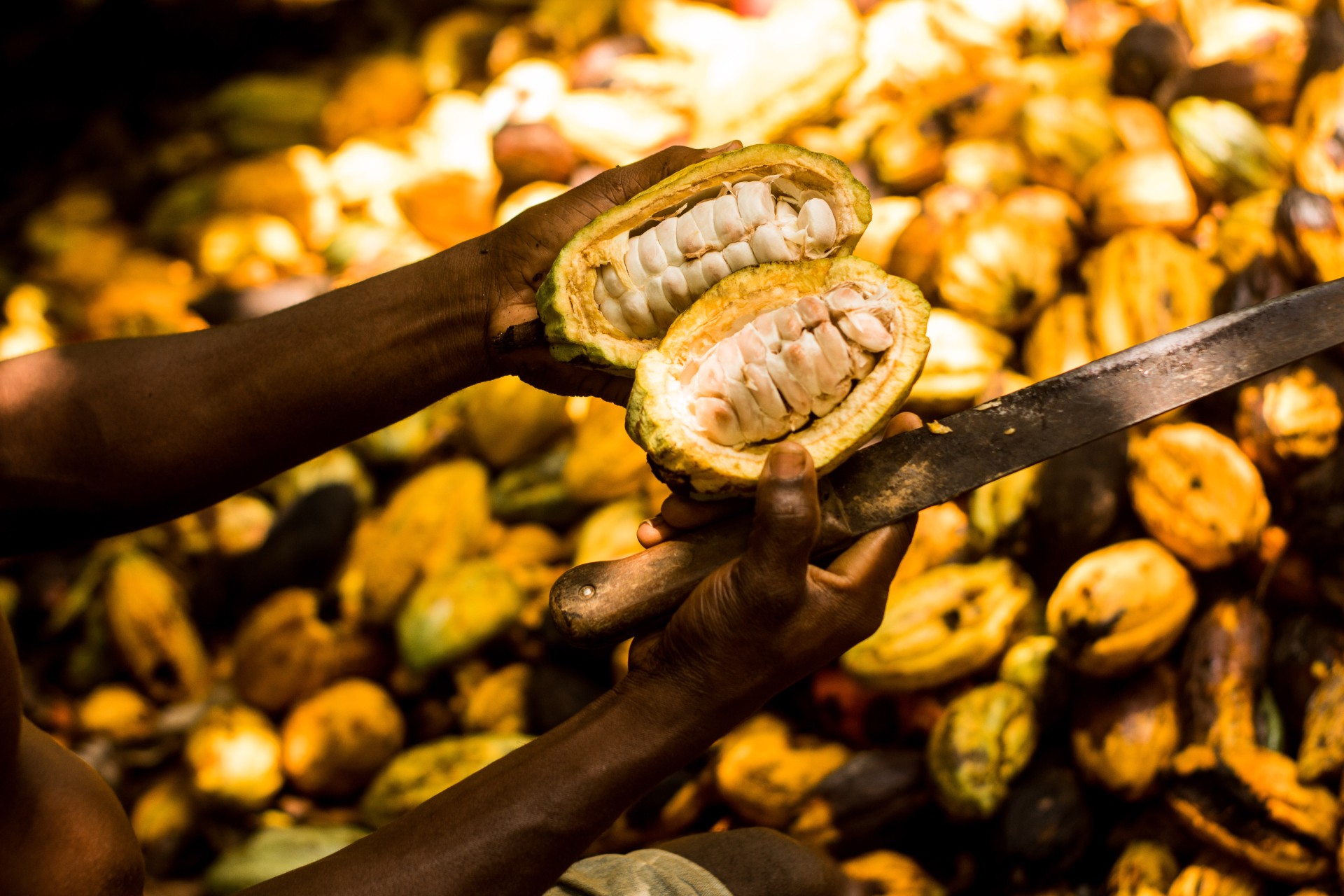
Plastic bags in our oceans
Subsequent to the signing of the Emission Reductions payment Agreement between Ghana and the International Bank for Reconstruction and Development in June 2019, implementation has begun in earnest. Some of the implementation activities include:
- Launched by the President of Ghana, His Excellency Nana Addo Dankwa Akufo-Addo on FRIDAY, 4TH OCTOBER 2019 at the ACCRA INTERNATIONAL CONFERENCE CENTER
- Signing of Emission Reduction Payment Agreement of US$50 million with the World Bank
- Benefit Sharing Plan for disbursement of payments developed
- Verification and validation of first Monitoring Report completed. $4,862,280 received for reducing 972,456 tons of carbon emissions
- Redd+ Dedicated Account (RDA) Steering Committee chaired by Ministry of Finance has been constituted to oversee the disbursement of carbon payments received.
- Development of community governance structures using the Community Resource Management (CREMA) approach for receiving funds.
- Set up of accounts by communities for receipt of fund completed
- Ongoing procurement process
- Additional/ Alternative Livelihood intervention being rolled out to farmers.
- Reduction of Deforestation in the Program Area relative to the reference period of 2005-2014



